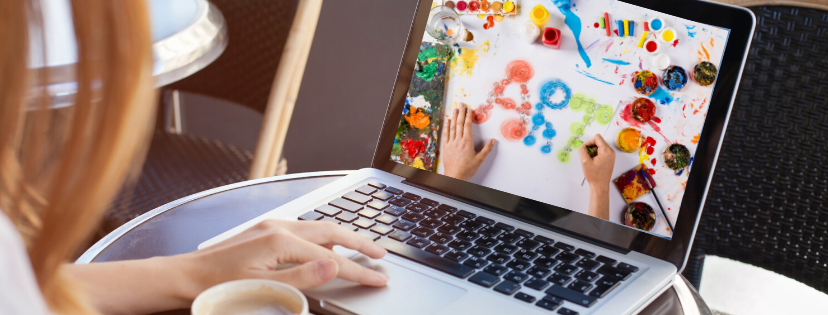All over the world, with physical distancing and social isolation, people are moving away from face to face meetings to virtual and online connection. Board rooms, classrooms, doctor’s surgeries as well as therapy rooms are now lighting up on our computer screens.
Art therapy relies on the visual medium and the use of tactile and kinesthetic connection to creative materials as well as the human empathic connection. So, one question that we have been asking ourselves is; Is it possible to deliver art therapy online?
I recently completed my final Art Therapy Placement with Canteen, the organization that provides services to young people affected by cancer. When I arranged the placement in late 2019, the idea of conducting an online art group was a new and innovative concept to both Canteen and the College of Complementary Medicine.
By the time the group commenced in March 2020, COVID 19 had been declared a pandemic and many businesses had closed offices and sent staff to work from home. Suddenly everyone was interested in online art therapy especially art therapy groups.
Working in a virtual world was a completely new way of doing Art Therapy for me. I was used to being in the same room, sitting close to my client, looking at the art together, paying attention to body language and feeling an emotional connection.
Luckily, I was paired with a staff member from Canteen’s online counselling service, Canteen Connect. She helped me navigate the technology and shared some important tips in working with people in the cyberspace.
In this article, I want to outline some top tips for managing technology in the online space.
Privacy, Safety and Confidentiality
Whether working with individuals or groups, ensuring privacy and confidentiality of the participants and clients is paramount.
For the therapist, using headphones and a microphone ensures that sound is not transmitted or broadcast, especially if you’re working in a home or office where others may be in a position to overhear the conversation.
For the clients, especially young people, it is important to have them in a room with a closed-door like their bedroom. Headphones and microphones add their ability to keep the discussion secure and private.
Stability of the Internet Connection
At the time of COVID 19 when many people are working from home, there have been significant problems maintaining the stability of our internet connections. Unstable internet results in audio distortion, connection drop-outs and video lagging or freezing. If this occurs frequently, the quality of the interaction between client and therapist may be affected.
The technology used
In our experience, the quality of connection and experience decreased in order from computer to tablet or iPad to phone. This was especially the case with group video calls.
However, in times of technology glitches, we found it helpful for participants to have our mobile numbers in case of internet drop-out or other technical issues so that we could text them through a troubleshooting solution.
Hands-free
Art Therapy involves making art, whether drawing, painting, making a collage or working clay. It is important that the participants are able to place their camera in a stable position and have both hands free.
Practice and take the time to learn
Our online art group used Zoom as the video interface software. This system comes with lots of innovations that can enhance the group experience such as share screen, chat facility, private messaging, as well as whiteboard function and breakout groups.
However, if you aren’t as lucky as me to have a very experienced co-facilitator, I highly recommend doing the Zoom tutorials which take you through the functions step by step with easy to follow videos as well.
Knowing how the technology works, means that you as a therapist can focus on the content and process of your group or individual session.
National Participation in the Online group
The young people who participated in our online Art Group with Canteen were all in the 20s and had the shared cancer experience of having a parent with terminal cancer. Because group sessions were live in the virtual world, we were able to recruit participants from all over Australia. We had young people join in from Sydney, Melbourne and Adelaide plus we, the facilitators were operating from our own homes in Newcastle and Sydney.
Feedback from participants
All of the participants benefited from the group. Their feedback in the survey indicated that they felt heard, their problems were understood and they made a connection with other young people of a similar age, going through a similar cancer experience.
In conclusion, online, virtual, art therapy is possible. My biggest takeaway from this experience is take the time to make sure you get the technology right. Test the connection with participants and above all; don’t be afraid, embrace the technology as an opportunity to connect in a new and innovative way.
Jenny Fisher -Expressive Arts Facilitator, Writer, Storyteller, Photographer, Artist, Consultant & Coach, Personal and Team Development through Story and Art

